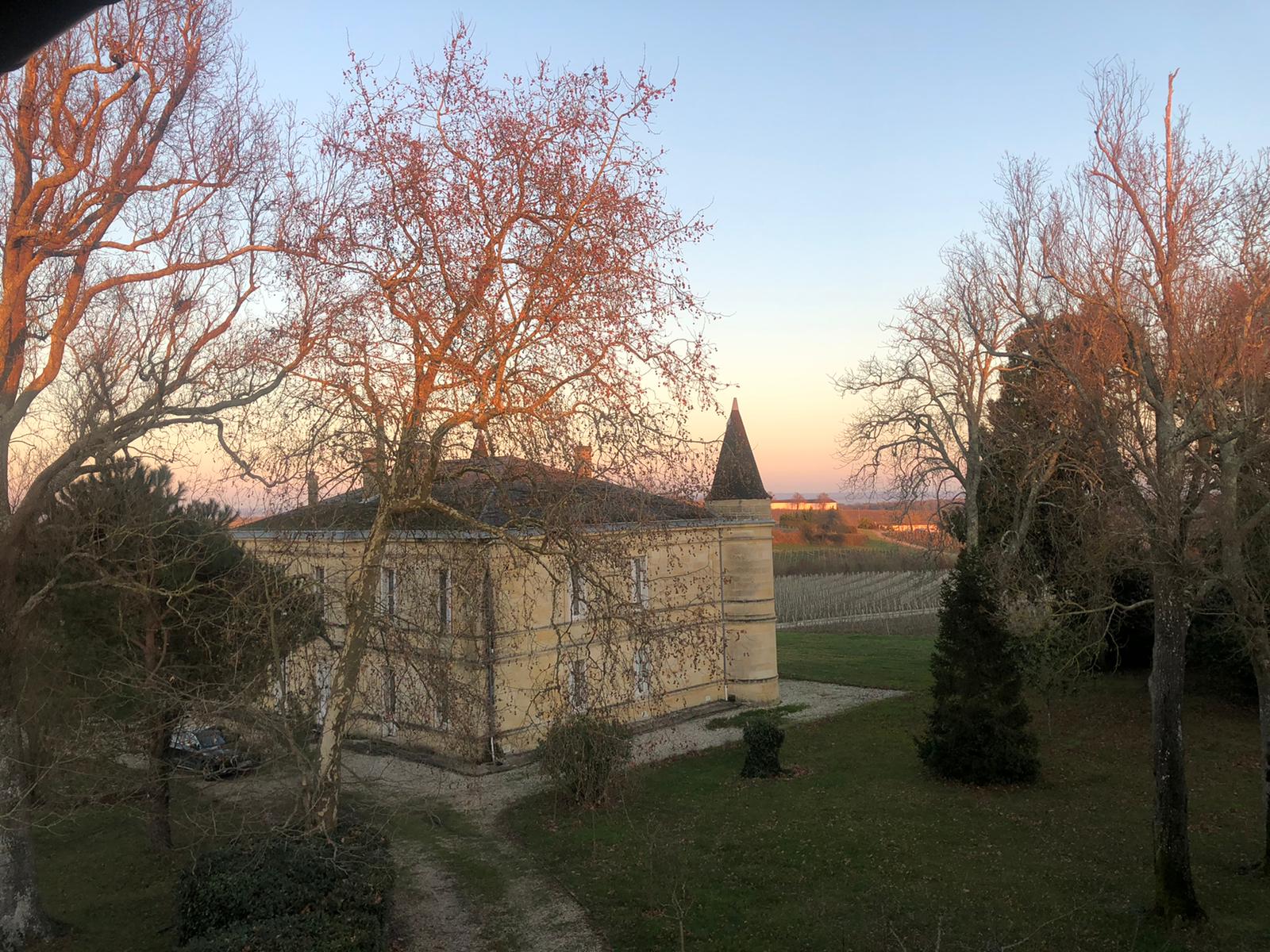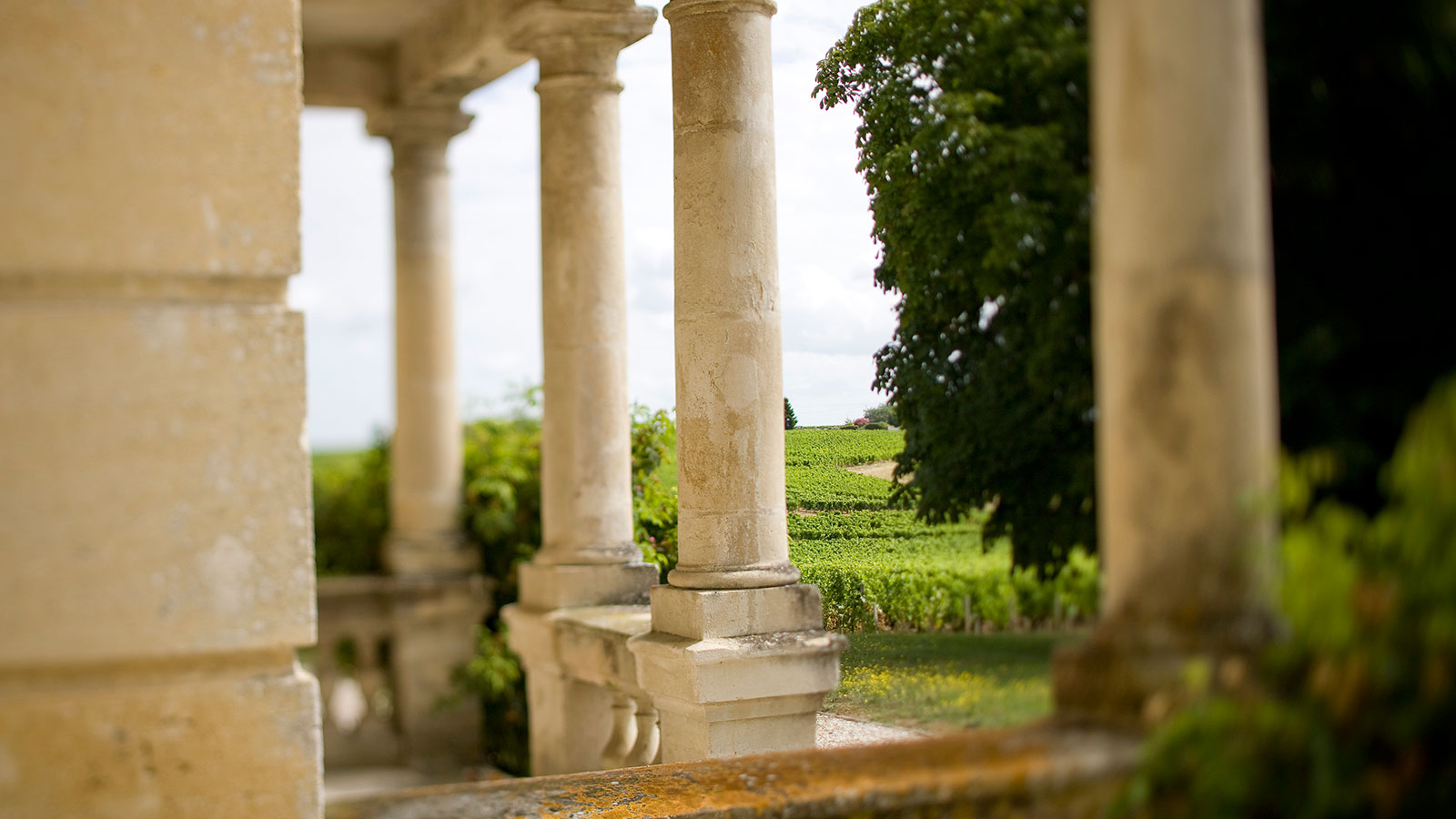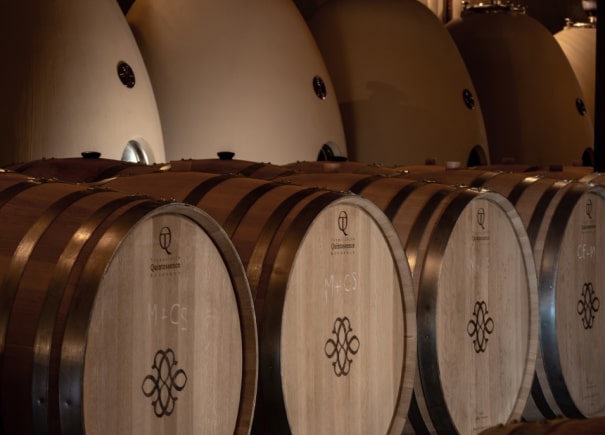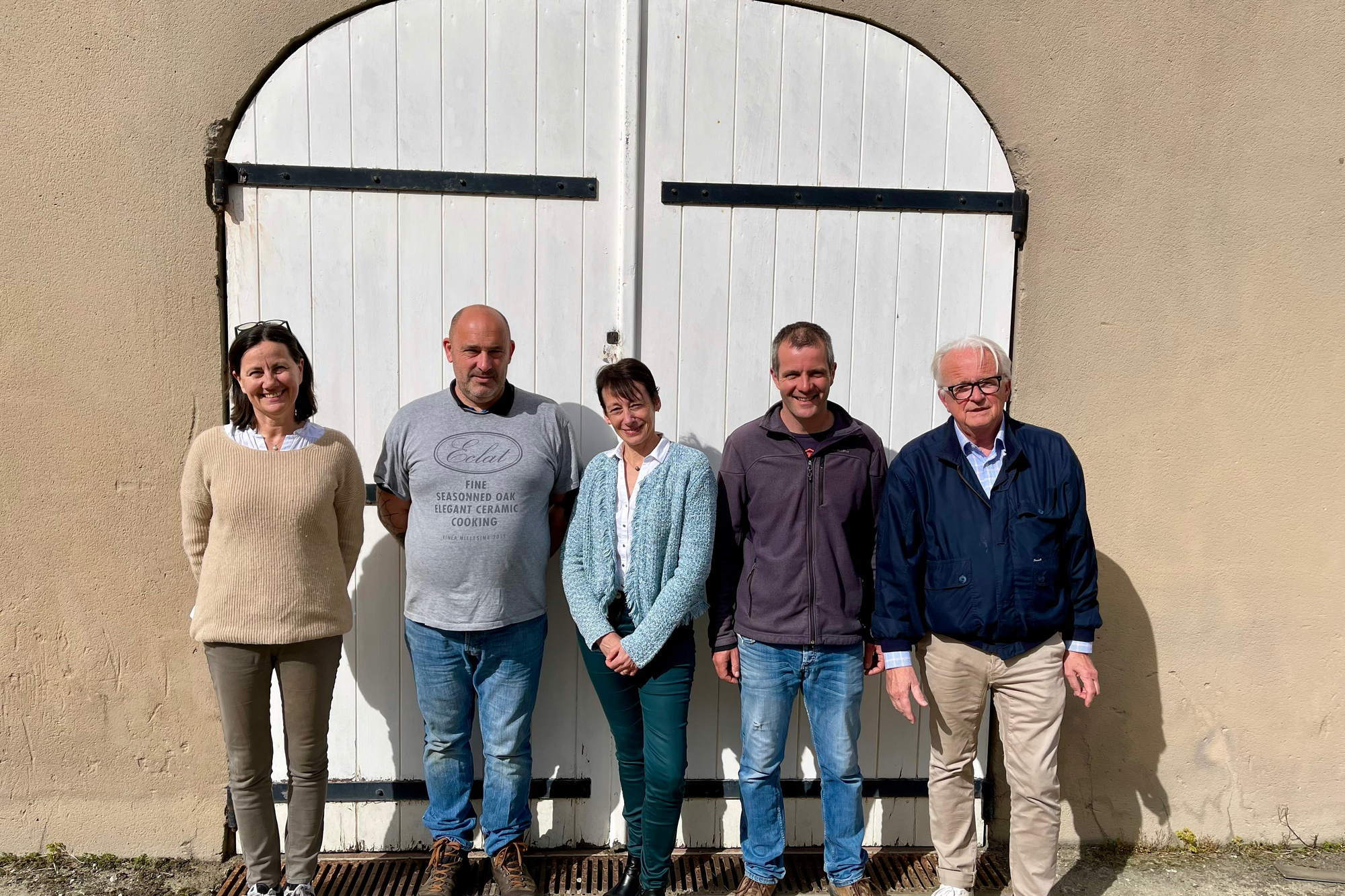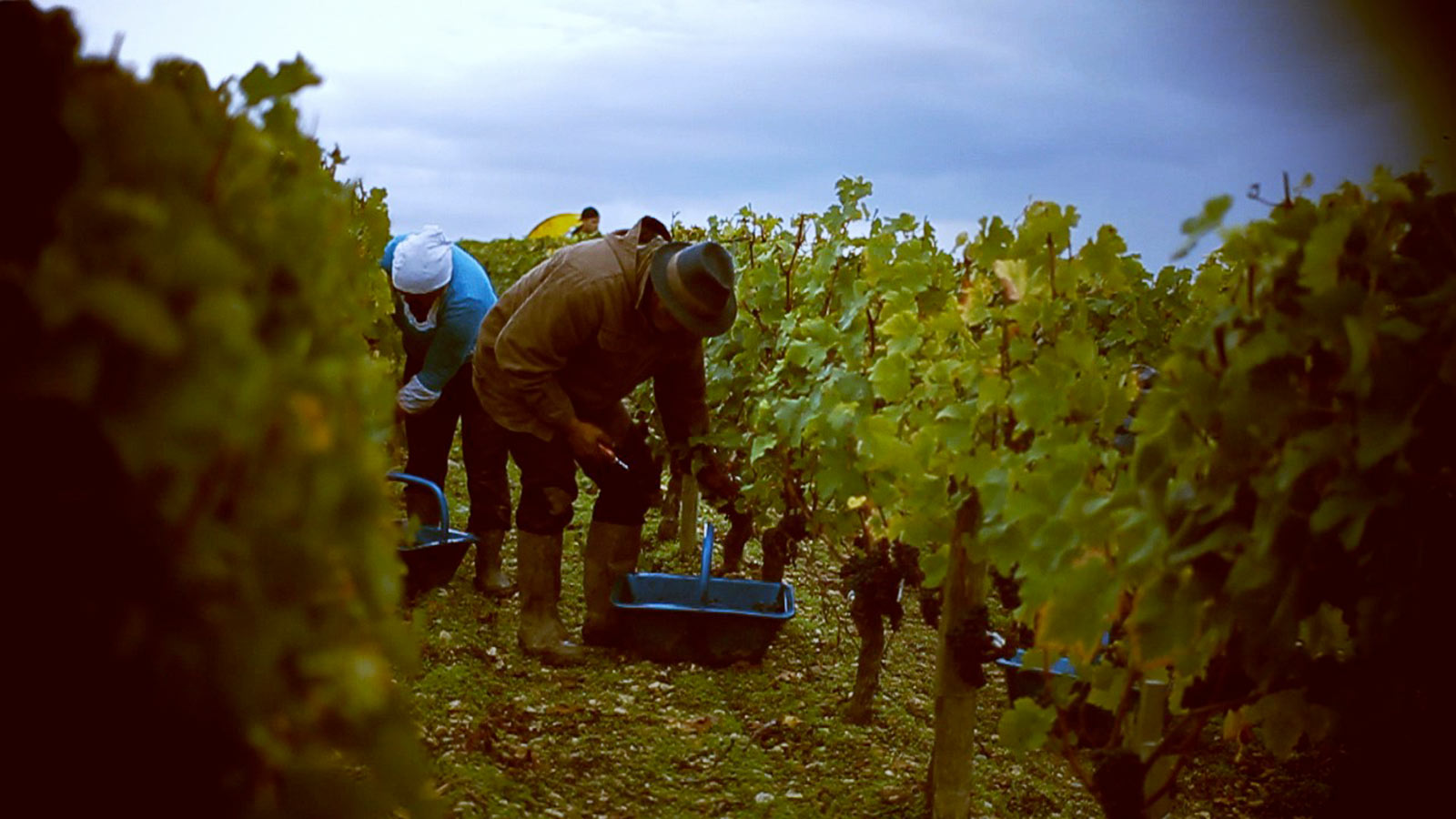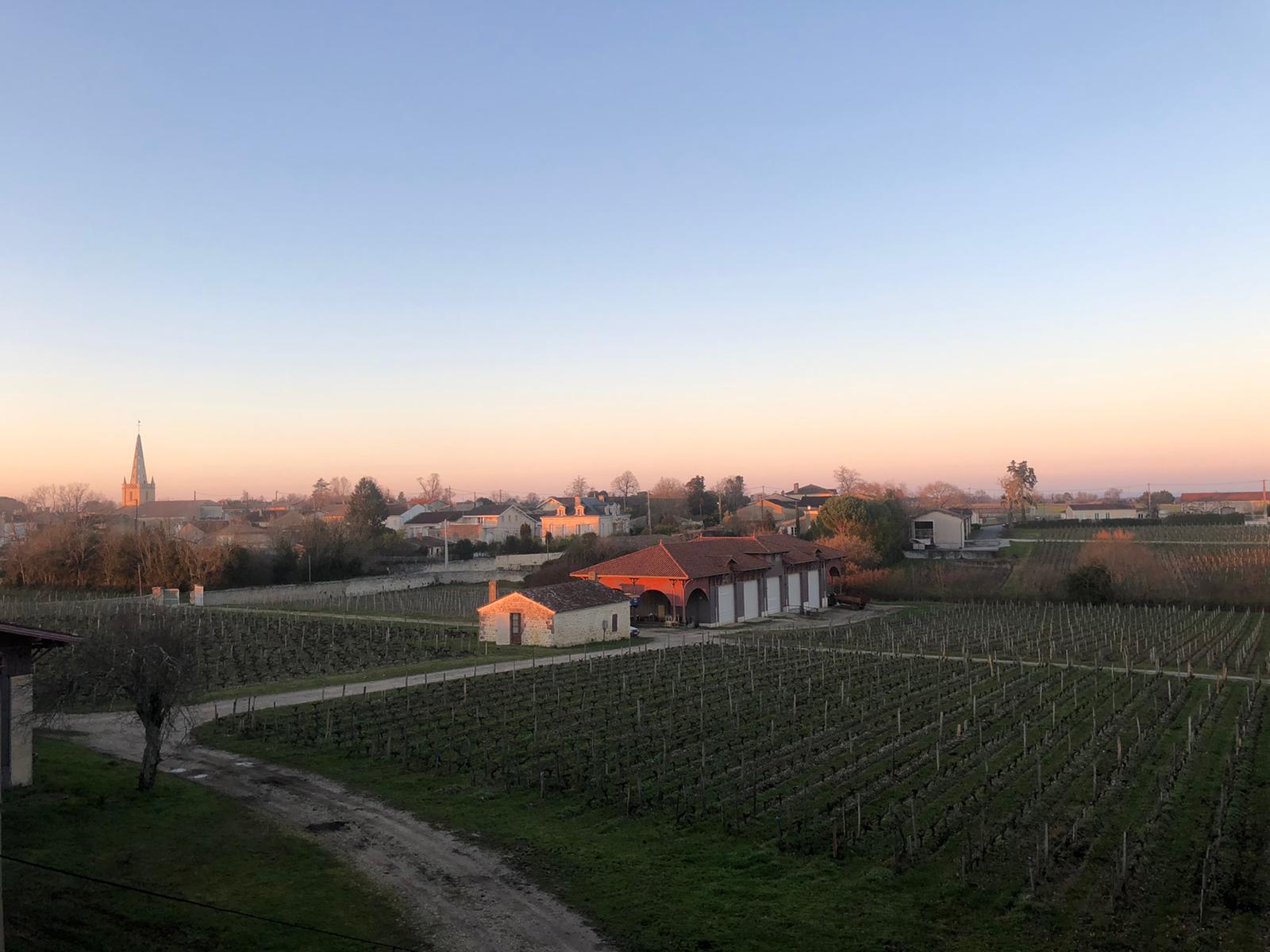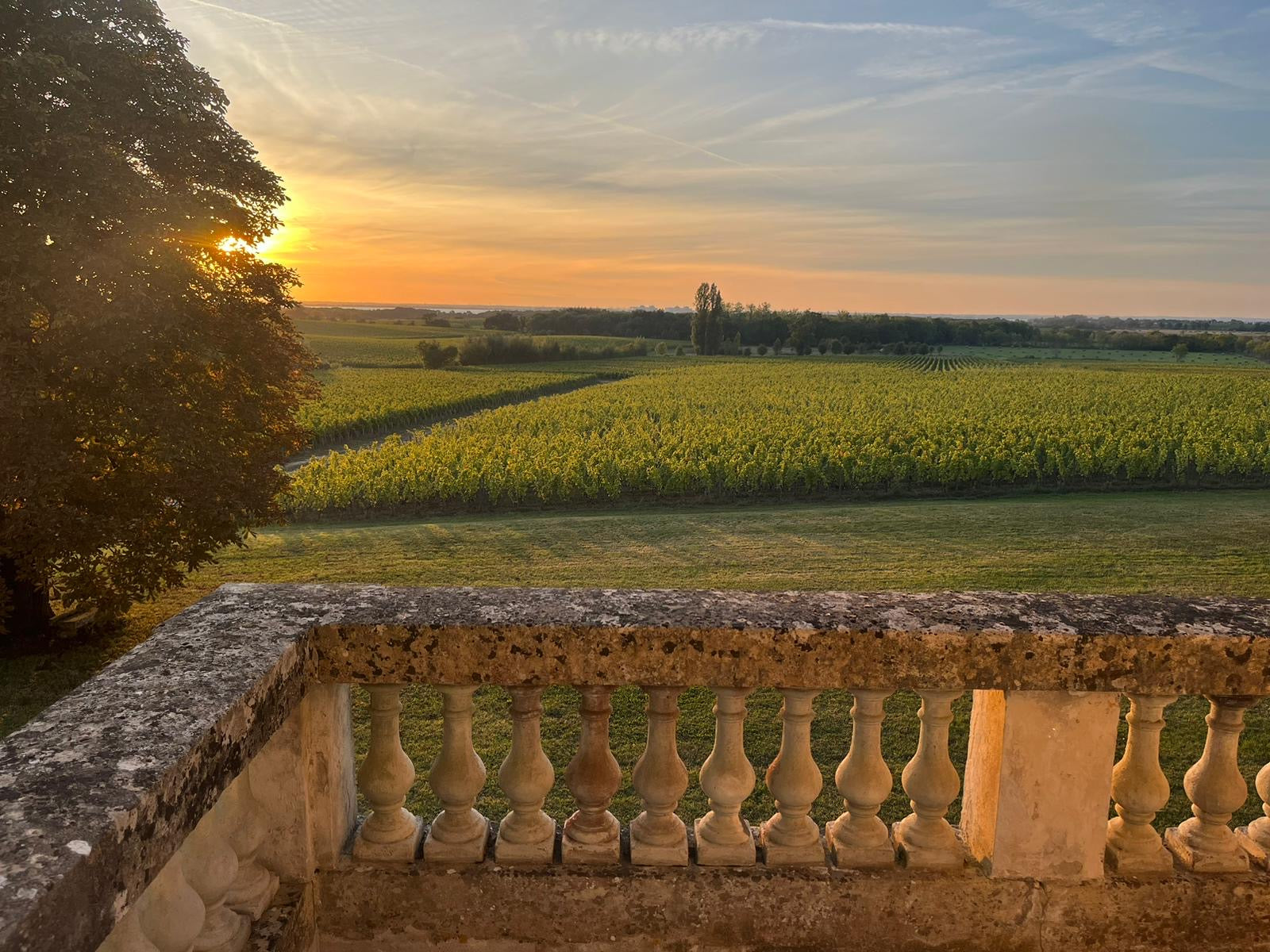
An Exceptional Médoc Vineyard
Since the 16th century, Charmail has occupied one of the most beautiful gravel terroirs of the Médoc. Located in the commune of Saint-Seurin-de-Cadourne, north of Pauillac, its vineyard stretches over lands rich in history, overlooking the Gironde estuary. This natural location creates an ideal microclimate, where the river moderates the temperature, protecting the vines from frost and ensuring a slow, even ripening of the grapes.

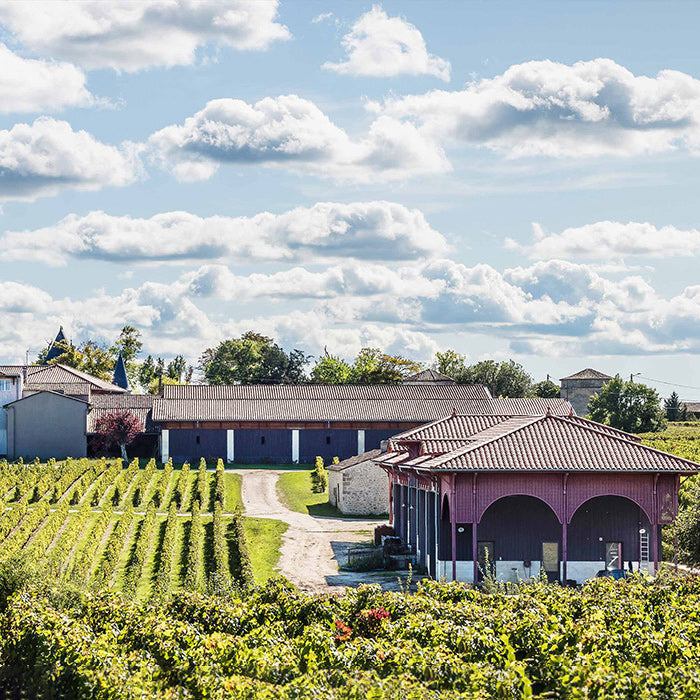
The Heart of Charmail’s WinesTHE TERROIR
Charmail rests upon an intricate mosaic of soils, each contributing its own unique touch to the wine. Each of the four grape varieties in our blend has found its place, according to its needs. Our duo of Cabernets (Cabernet-Sauvignon et Cabernet-Franc) thrives on the higher grounds of the estate, well-drained, in soil rich in siliceous gravel from the Pyrenean massif. On the hillsides, where the clay is red and rich in iron, it is the Merlot that best expresses itself, offering its hallmark richness, depth, and a full-bodied mid-palate. At the foot of the slope, closest to the channels or "esteys" (a Gascon term), the estate's Petit Verdot finds the humid soil it particularly appreciates.
This intricate balance of soils and grape varieties makes Charmail's wines a true reflection of the Médoc's unique terroir.
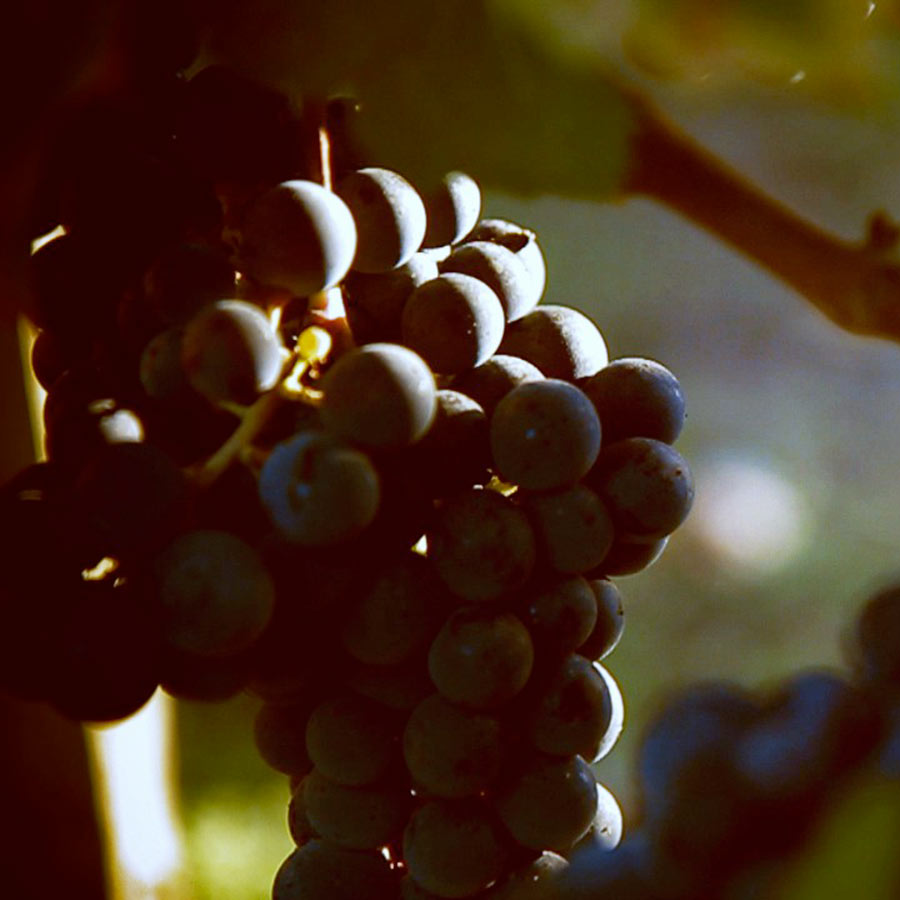
The four grape varieties planted on those soils are: Merlot (40%), which brings softness and a rich texture to the mid-palate of the wines. Cabernet Sauvignon (35%) adds structure, firm tannins, and the potential for graceful aging. Complementing these are Cabernet Franc (15%), which imparts elegance and floral notes, adding layers of complexity to the tannic framework. Finally, Petit Verdot (10%) offers a distinct touch of spice and power, giving the wines a unique signature.
Charmail
Viticulture
Respecting the Land, Honoring Tradition
At Charmail, the work begins long before the first grape is picked. Every year, from winter pruning to summer canopy management, the vineyard is tended with the utmost respect for the terroir.
In winter, the soil is traditionally worked with earthing up and unearthing, aerating the topsoil and preparing the vines for the growing season. Pruning takes place between December and March, using the traditional Double Guyot method, where only 6-8 buds are left per vine to control yields and enhance concentration in the grapes.
By early spring, the vines awaken, and the workers engage in épamprage—the meticulous removal of non-fruit-bearing shoots to direct the vine’s energy to the most promising branches. This is done entirely by hand, ensuring the health of each vine and promoting balanced growth.
As the season progresses, summer brings further canopy management, with leaves carefully thinned to improve sun exposure and air circulation. This labor-intensive work ensures that each bunch of grapes ripens fully, ready for the harvest, which usually begins in September and lasts 2-3 weeks, depending on the vintage. The harvest at Charmail is a fully manual affair, with the grapes handpicked and gently placed in small crates to avoid damage — a method that ensures the fruit arrives at the winery in perfect condition.
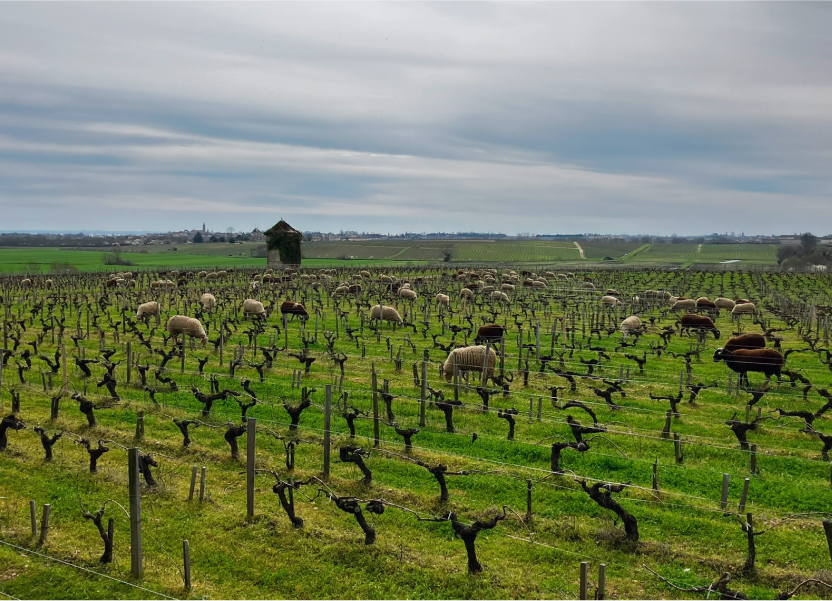
Charmail's Sheep
One of Charmail’s most distinctive practices is the use of sheep to graze the vineyards, a tradition that dates back centuries. These sheep play a vital role in the estate’s sustainable approach to vineyard management. Not only do they help with weed control and natural fertilization, but they also assist in canopy management by nibbling away at the lower leaves, improving airflow and sunlight for the ripening grapes. This ancient, eco-friendly practice allows the vineyard to thrive without the need for chemicals, preserving the health of the soil and the vines for future generations.
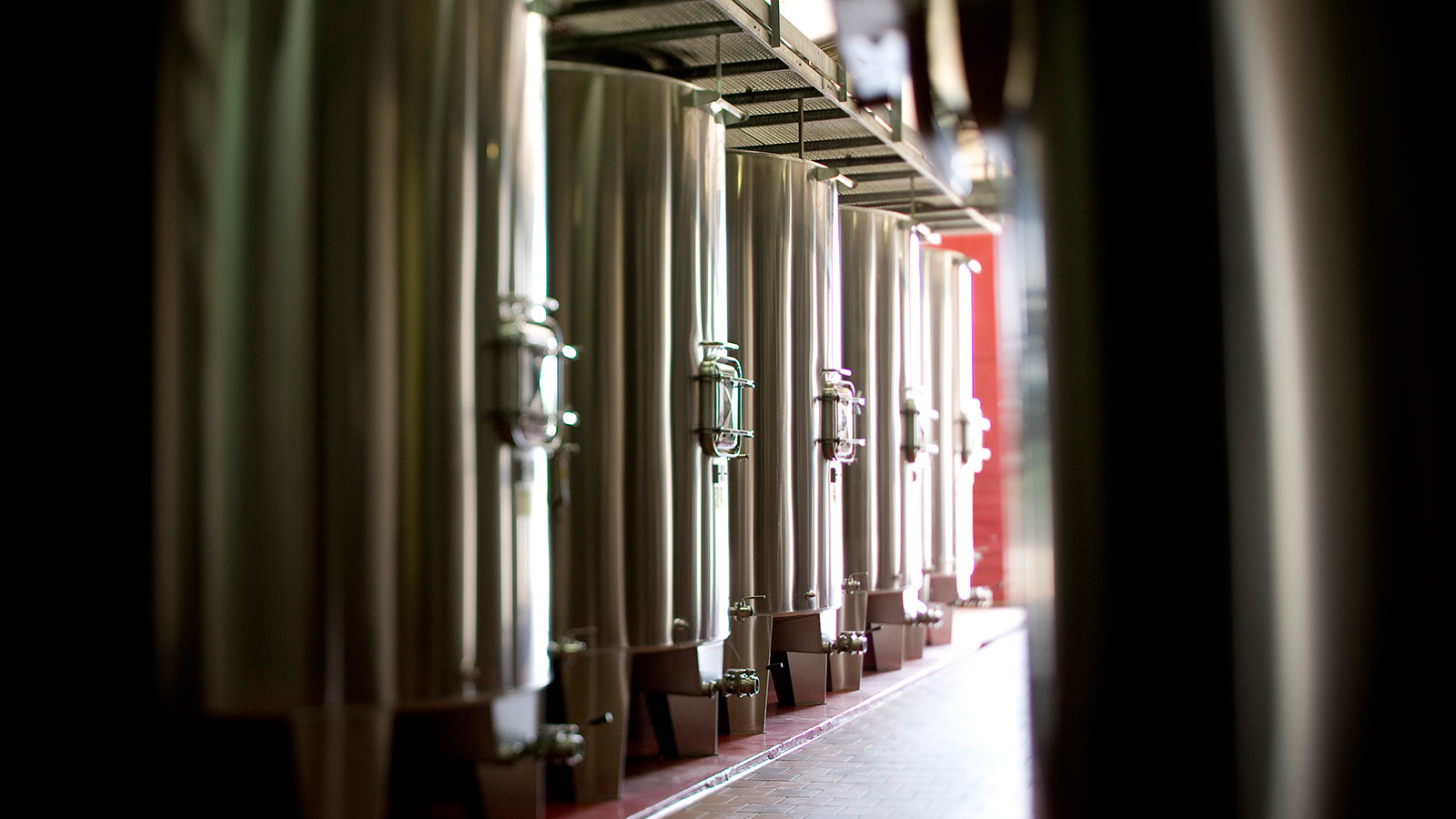
Crafting Wines that Reflect the TerroirVINIFICATION
At Château Charmail, vinification is both an art and a science, blending tradition with innovative techniques to reveal the full expression of the estate’s terroir. After meticulous hand-sorting, the grapes move to the vat-house, where 30 temperature-controlled stainless steel vats manage fermentation. Each vat handles about 1.5 hectares of vines, but what sets Charmail apart is its unique approach to vinification. Rather than sticking to strict plot-by-plot methods, they regroup grape varieties based on soil type—whether it’s Merlot from gravel or clay, Cabernet Sauvignon from gravel, or Petit Verdot from the estate’s lower slopes. Each variety is treated according to its terroir, ensuring the best possible expression of the land.
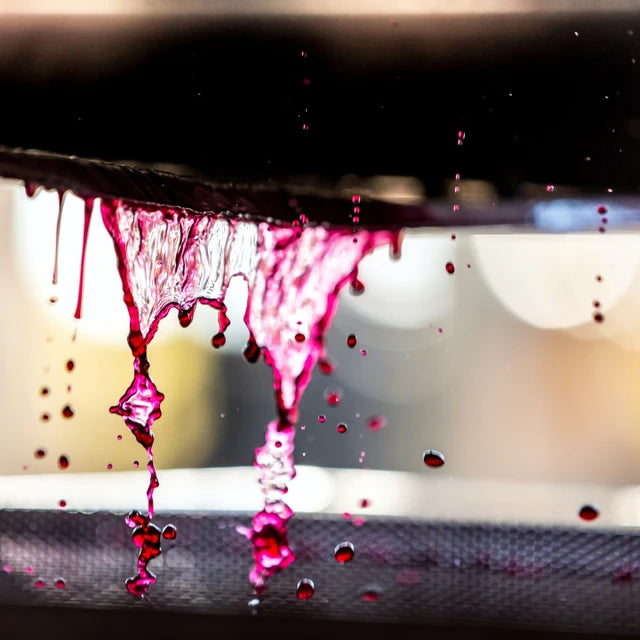
Extraction is handled with care and precision. Charmail follows a method similar to brewing the perfect cup of tea: slow, gentle, and deliberate. By using low temperatures, the team gradually draws out the essence of the fruit without extracting harsh tannins. This method, refined by Sébastien Pineau, ensures the wines are balanced, elegant, and packed with depth. Since 2018, Charmail has embraced spontaneous fermentations, allowing natural vineyard yeasts to guide the process, deepening the wine’s connection to its terroir.
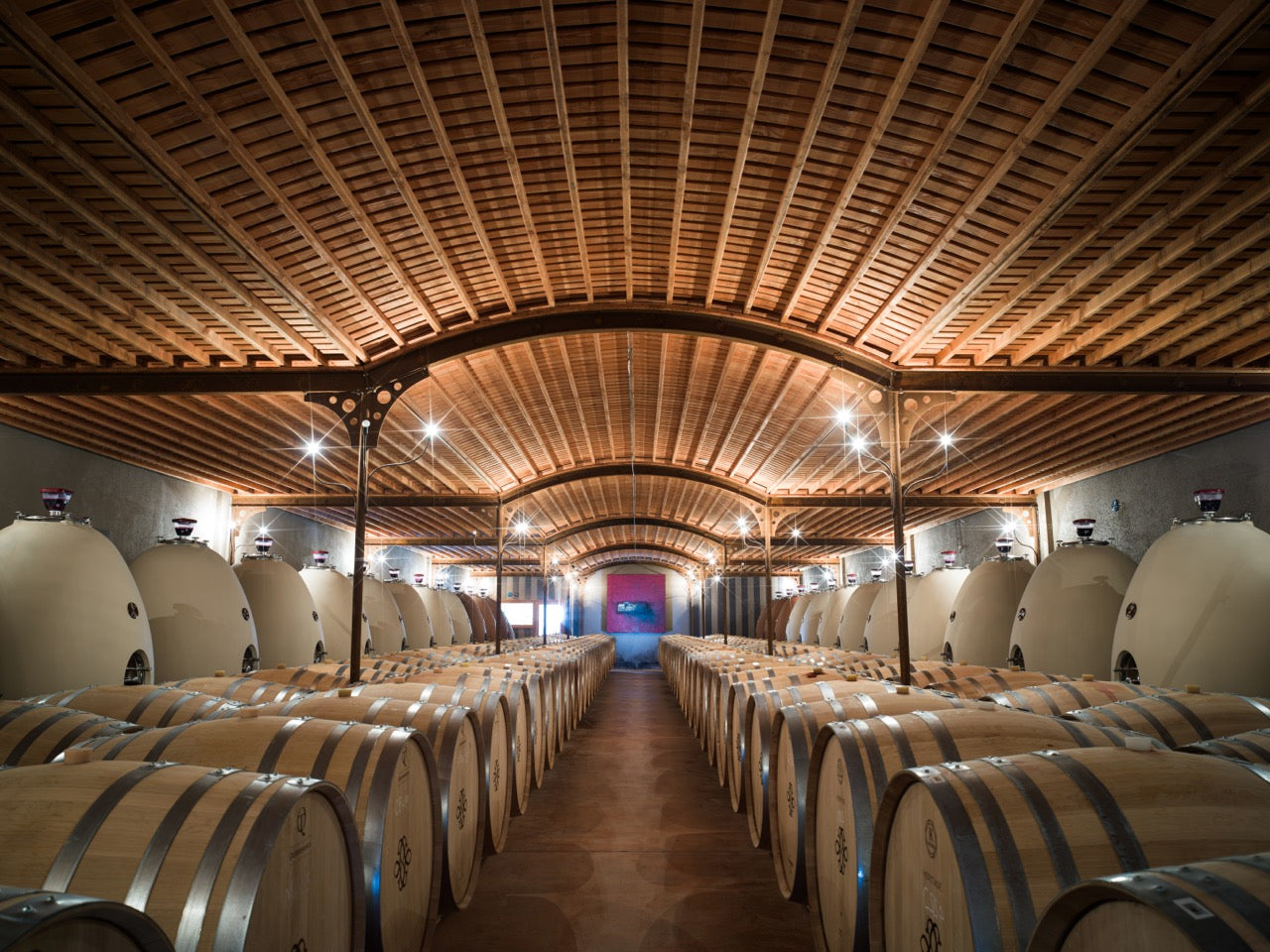
Refining the Wines to PerfectionAgeing
After vinification, the wines are aged with great care, following a philosophy that balances tradition with precision. 500-liter demi-muids are preferred over smaller barrels to allow for a slower, more refined integration of oak, ensuring the fruit remains at the forefront.
Sébastien Pineau, lead winemaker, has moved away from using too much new oak, instead opting for neutral vessels that let the terroir speak through the wine. This approach results in wines with deep, creamy fruit, a silky texture, and firm, linear tannins that promise great aging potential.
“Walking into Charmail’s cellar feels like you’ve stepped out of Bordeaux—concrete eggs and demi-muids (500L) everywhere, a big stand out from the 225L barrels you expect in this wine region!”
Bertille Goudet-Liquard
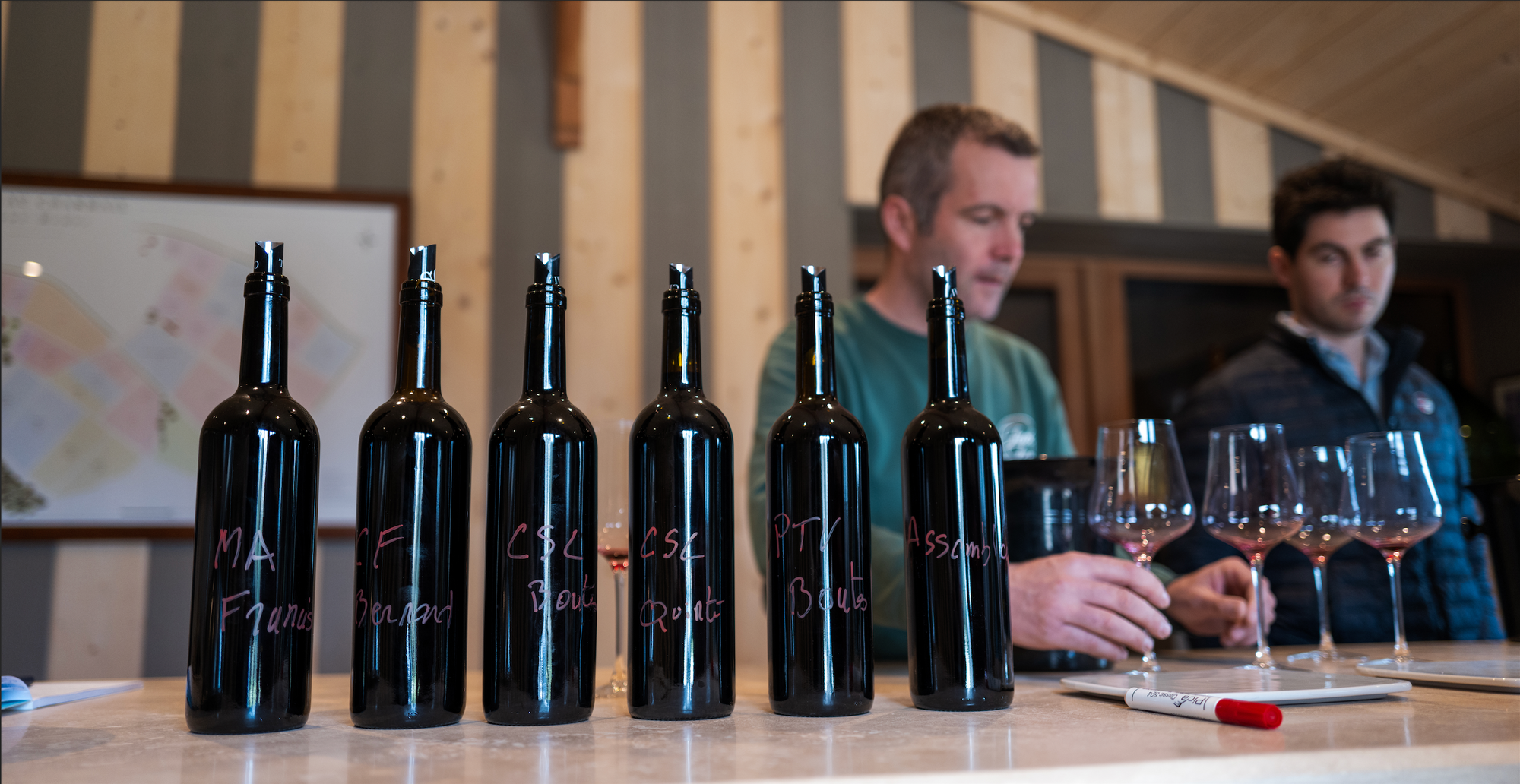
The Last Step in Making the WineBLENDING
The true art, and fun, of winemaking at Charmail lies in the annual challenge of creating the perfect blend for each vintage. This blending process, which begins in December, is a key moment in the creation of Charmail’s wines. Each lot is tasted, classified, and blended to achieve the perfect balance of structure, elegance, and complexity. It is in these final decisions that the essence of Château Charmail’s terroir and savoir-faire truly come to life.
Every year is different, shaped by the whims of nature. Some years, unexpected weather conditions may severely impact the Merlot, resulting in wines that are more Cabernet-driven. Other times, the team faces the delicate task of balancing all the grape varieties—selecting the ideal combination to bring out the best in the wine. It’s this dynamic and creative process that defines each millésime, ensuring that no two vintages are ever the same, yet always a true expression of the estate’s terroir.
